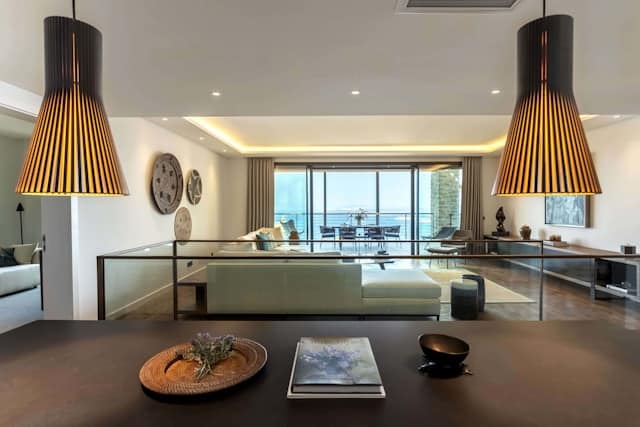How to Design an Indoor Play Area that Encourages Creativity in Toddlers?

Creating an indoor play area that nurtures creativity and spurs imagination in toddlers can be quite challenging yet rewarding. It’s not just about filling a room with toys. It involves creating an environment that encourages exploration, promotes independent thinking, and supports cognitive development. In this detailed guide, we provide you with the insights and strategies required to design an indoor play area that encourages creativity in toddlers.
Understanding the Importance of Play in Early Childhood Development
Before diving into the specifics of designing the play area, it’s imperative to understand why play is so vital in early childhood development. Play is a crucial activity for toddlers as it helps them understand the world around them, learn social skills, enhance their cognitive abilities, and, most importantly, foster creativity.
Dans le meme genre : What’s the Best Way to Incorporate a Solarium for Year-Round Plant Growth?
Play is not simply a way for kids to kill time or expend energy. It’s a critical developmental tool that helps them learn about their environment, their bodies, and how they relate to other people. Through play, toddlers learn to explore, solve problems, and express themselves creatively.
Creating a Safe and Comfortable Space
Safety should be the primary concern when designing an indoor play area for toddlers. The play area should be free from hazards such as sharp corners, breakable objects, or small items that children could swallow. Also, use child-friendly materials that are non-toxic and easy to clean. The play area should be well-lit, adequately ventilated, and have a comfortable temperature.
Sujet a lire : How Can You Design a Home Office with an Eco-Friendly Green Roof?
Comfort is equally important. Toddlers are more likely to enjoy playtime when they are comfortable. The flooring should be soft and cushioned to protect against falls. If possible, use natural materials such as wood or cotton, which are warm and inviting. The play area should be large enough for toddlers to move around freely but small enough to feel cozy and secure.
Selecting the Right Toys and Play Materials
Toys and play materials are the building blocks of any play area. When selecting toys, look for ones that challenge children’s imaginations and promote open-ended play. Open-ended toys are ones that can be used in multiple ways, such as blocks, dolls, action figures, or art materials.
Invest in high-quality toys that are durable and safe for toddlers. Avoid toys with small parts that could pose a choking hazard. Also, while electronic toys can be entertaining, they often limit creative play. Instead, opt for traditional toys that stimulate imagination and critical thinking.
Art materials such as crayons, paints, and playdough are excellent tools to foster creativity. These materials allow toddlers to express their ideas and emotions in a tangible form. However, always supervise toddlers when they are using art materials to prevent accidental ingestion.
Integrating Nature into the Play Area
Incorporating elements of nature into the play area can be an effective way to stimulate creativity and foster a love for the environment. You can do this by bringing in potted plants, natural light, or even creating a mini indoor garden.
Exposing children to nature helps them to develop a sense of wonder and curiosity about the world. It also provides them with a range of sensory experiences that can stimulate creativity. For example, toddlers can explore different textures by playing with leaves, rocks, or soil.
However, remember to choose plants that are non-toxic and safe for toddlers. Also, ensure that the plants are well cared for and that the soil is kept clean to prevent the growth of bacteria or mold.
Designing the Play Area Layout
The layout of the play area plays a crucial role in encouraging creative play. Arrange furniture and toys in a way that promotes engagement and interaction. Avoid clutter, as it can overwhelm toddlers and hinder creative play.
Create different zones for different types of play activities. For example, you can have a reading nook, an art corner, a building block area, and a pretend play zone. This helps toddlers to make choices about what they want to do and fosters independence.
Placing mirrors at a child’s eye level is another excellent idea. Mirrors can enhance toddlers’ self-awareness and encourage imaginative play. For instance, a toddler may pretend to be a doctor or a teacher while looking at their reflection.
Remember, the goal of designing an indoor play area is to create a space that encourages creativity, promotes independent thinking, and provides a safe and comfortable environment for toddlers to explore and learn. With careful planning and an understanding of toddlers’ developmental needs, you can create an engaging play area that nurtures creativity and fuels imagination.
Incorporating Music and Movement in the Play Area
Incorporating music and movement in your toddler’s play area can greatly enhance their creativity and cognitive development. Toddlers naturally respond to rhythm and melody. They enjoy dancing, clapping, and moving to music. Music helps to stimulate their auditory senses, enhance their motor skills, and foster their emotional expression.
Consider introducing simple musical instruments such as drums, xylophones, or maracas. These instruments can be a great way for toddlers to explore different sounds and rhythms. They can also play an important role in enhancing motor coordination and promoting creativity. For instance, toddlers can create their own music, learn to identify different sounds, and even develop an early understanding of musical concepts like rhythm and tempo.
In the same vein, creating a dedicated space for movement is also essential. Toddlers are full of energy and love to move around. A designated movement zone can encourage them to jump, dance, climb, or even practice yoga. This not only helps in their physical development but also provides opportunities for imaginative play. Toddlers can pretend to be animals, dancers, or superheroes, thereby stimulating their creativity and imagination.
Remember to make the music and movement area safe and comfortable. Ensure there’s enough space for toddlers to move around freely without the risk of injury. Use soft mats or cushions to protect them from falls. Also, keep the volume of music at a comfortable level to prevent any potential damage to their sensitive hearing.
Including Books and Reading Materials
Even though toddlers may not be able to read yet, including books and reading materials in the play area is a valuable addition. Books open up a world of imagination for children and can significantly boost their creativity. They introduce toddlers to new ideas, diverse characters, and magical places, all of which can inspire creative play.
Choose a variety of books that are age-appropriate and engaging. Picture books with vibrant illustrations are particularly appealing to toddlers. They not only help to develop their visual senses but also stimulate their creativity. Interactive books with textures, pop-ups, or flaps are also a good choice as they add an element of surprise and fun.
Create a cozy reading nook within the play area, complete with comfortable seating and soft lighting. This can become a special place where your toddler can cuddle up with a book, encouraging a love for reading from a young age. Moreover, reading aloud to toddlers helps them develop language skills, enhances their listening abilities, and fosters a strong bond between you and your child.
Conclusion
Creating an indoor play area that encourages creativity in toddlers involves more than just filling the space with toys. It’s about designing a safe, comfortable, and stimulating environment that promotes exploration, independent thinking, and learning. By understanding the importance of play in early childhood development and incorporating elements like nature, music, movement, books, and the right toys, you can foster creativity and cognitive development in your toddler.
Remember, every child is unique, and what works for one might not work for another. It’s important to observe your toddler’s interests and preferences and incorporate them into the play area. This will ensure that the play space is not only engaging but also meaningful to your toddler. With a bit of planning and creativity, you can create a play area that your toddler will love and benefit from immensely.
